Kitchen worked on an Australian cocoa cultivation project when employed by Cadbury Schweppes in the late Nineties. After his retirement from Cadbury, he setup Daintree Estates which grows and manufactures single origin Australian chocolate using cocoa from plantations in North Queensland.
“We want to put Australia on the map for origin chocolate. It’s a new industry in Australia. No-one has ever successfully commercialized cocoa.”
High polyphenol content
Kitchen said that Australian cocoa was very expensive, but the potential was great, particularly since its polyphenol content was higher than most origins.
“It’s as high as anywhere in the world if not better. We’re not promoting our products as high in antioxidants yet, but we will at some stage.”
The taste
But what does it taste like?
“It’s got a good up front strong chocolate flavor that hits you straight away,” said Kitchen. Then come the back notes. “It feels like a tropical fruit that goes to the back of the palette and lingers.”
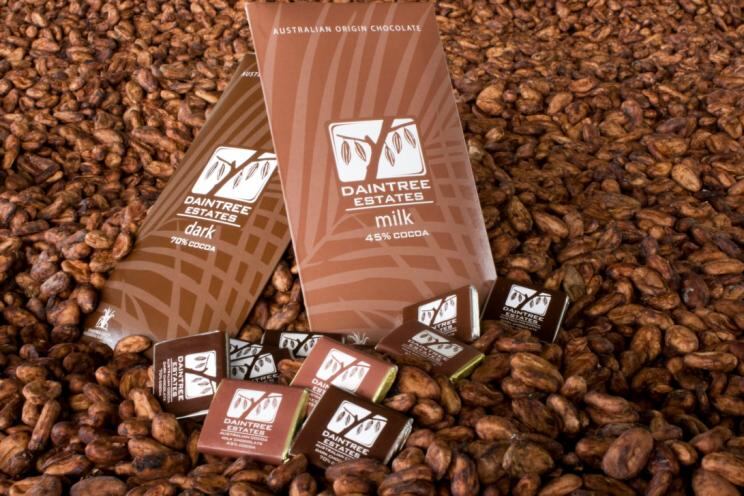
Cadbury and Australia cocoa
Cadbury’s interest in Australian cocoa dwindled when Kitchen left the company and Kraft Foods took over in 2010.
However, it has since rekindled the love affair and announced in August 2013 that it would invest in trials to commercially cultivate cocoa near the Ord River in north western Australia.
Kitchen was flabbergasted as an eight-year long Queensland Government-backed feasibility study by Cadbury during his time there concluded that the Ord River was unsuitable for cocoa growing.
“I think it’s a load of rubbish. It’s a political move. I just can’t believe it – I don’t know if some of the people are aware of some of the work we did.”
What’s wrong with the Ord River?
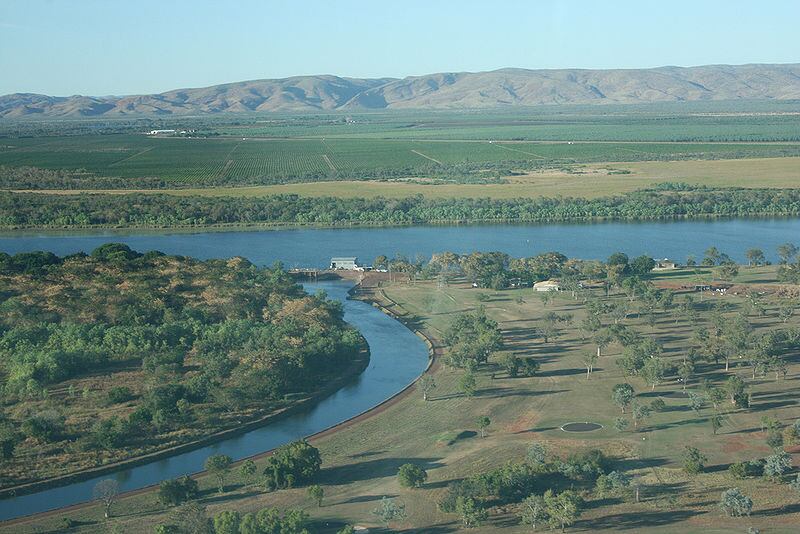
The latest Ord River trials by Mondelez International and its Cadbury subsidiary are supported by the new Australian government, which has also pledged a A$16m (US $14m) subsidy to upgrade Cadbury’s Hobart factory in Tasmania.
Kitchen said that when he was working for Cadbury, the test planation in the Ord River failed, conditions outside Darwin were average, but Northern Queensland was perfect.
The research never got to the bottom of the problem with the Ord River. It could be the soil, it could be that it needs irrigation because the region gets particularly wet, but nobody is entirely sure.
Offers to buy the beans refused every week
Daintree Estates produces enough Australian cocoa to sell single origin and even single estate origin chocolate, but is not entertaining requests to purchase its cocoa.
“We’ve had a large boutique chocolate manufacturer in Europe calling and asking to buy the beans. If we sell it would be at a huge premium – but we’re not in the game to sell cocoa beans. We have offers every week to buy our beans and we say no,” said Kitchen.
According to the Daintree chairman, Australia only produces between 50 and 100 MT of cocoa a year and Daintree sees it as more profitable to use the volumes for its own brands.
The product and demand
Daintree produces premium milk and dark Australian single origin chocolate In addition it has single origin chocolate from islands surrounding Australia and also makes a blend called “Oceania”.
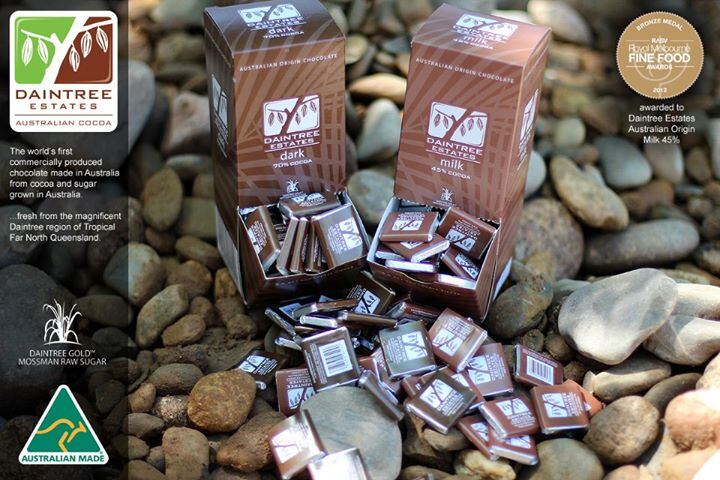
An 80 g 70% dark single Australian origin chocolate retails at A$8.50 (US $8.04). “It’s not a Mars or a Cadbury chocolate, it’s high-end. We have no problem selling it,” said Kitchen.
“It’s a segment that is really booming: Premium dark chocolates that have a story about them. People are looking to connect with farmer.”
Farmers are shareholders
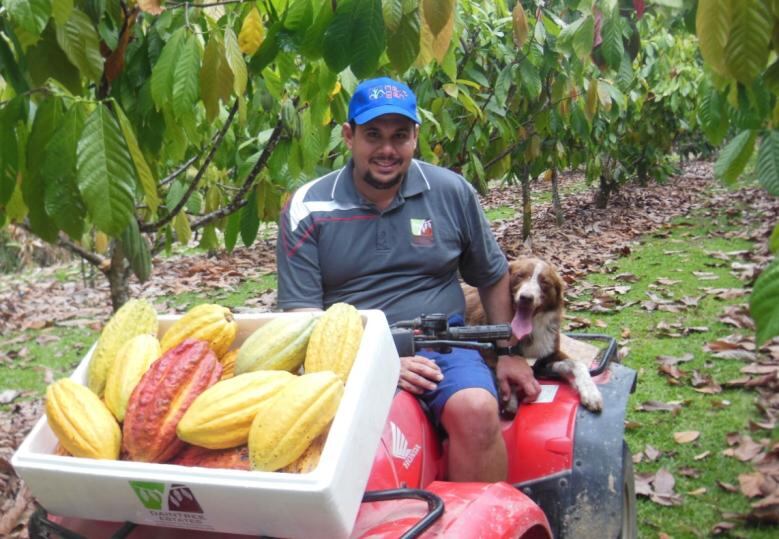
Daintree has targeted cane growers in North Queensland who were suffering from fluctuations in sugar prices and are looking to alternative crops.
The firm currently has around 12 growers and says more are coming on board. These farmers are all shareholders in the company and one is even a board member.
Daintree sells online and at retailers within Australia. It started selling in the touristic North Queensland area and also sells in small supermarkets in Melbourne. Its products are also sold in Belgium and the company recently secured distribution in the UK to cover Europe.
“Our logo and brand is well recognized but it could be better - we’re not even in Sydney yet,” said Kitchen.
Refining growing and processing
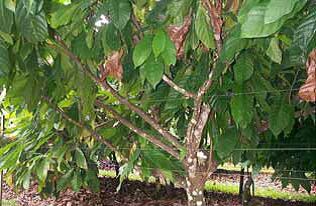
The company is using hybrid trees sourced from a breeding station in Papua New Guinea. The hybrid trees are varieties of Forastero, which is main variety of tree found around the world.
Daintree's trees are supported by trellising to control where branches grow, making the pods easier to pick.
“We didn’t grow them under shade. Everyone says you need to put the seedlings under shade” said Kitchen, but the company just used other trees as natural shade.
Daintree Estates currently holds 10-15 hectares of cocoa growing plantations, but expects its growing space to triple in the next three years.
The North Queensland cocoa trees spout pods within three years and produce good yields within four years.
Technology to reduce costs
The company is also looking at technology such as automatic pod splitters to reduce labor costs and it has designed its own bean sorters.
Daintree Estates farms produce yields of between three and four metric tons (MT) per hectare. This means the yields are far greater than average farms in Ghana and Indonesia, which typically yield around 0.5 MT per hectare – although some specific regions yield much higher.
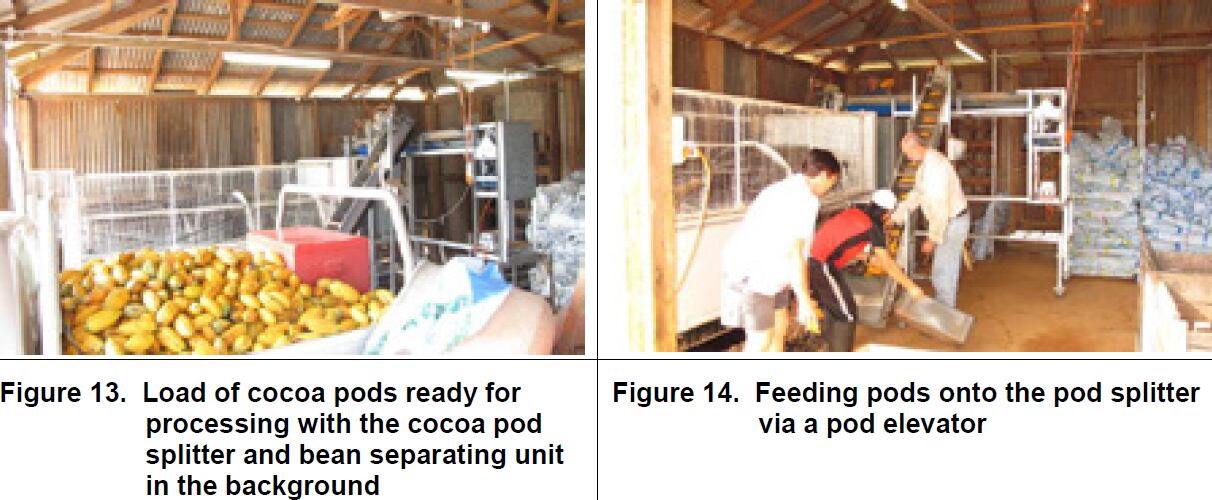
According to the ICCO, 58% of the world’s cocoa is grown in the Ivory Coast and Ghana.
“We are always seeing things happening in West Africa like coups which see cocoa prices move up and down like a yo-yo,” said Kitchen.
“You can’t compete with cocoa prices in Ghana and Indonesia because they pay workers so little.”
He said that his company was operating in the developed world and had a responsibility to pay workers fairly.
Timeline and facts
- In 1997 Barry Kitchen was responsible for cocoa procurement at Cadbury Schweppes’ Singapore factory.
- He sought an alternative origin source for cocoa as Indonesia faced political and social unrest, forest fires and an economic crisis.
- Cadbury therefore conducted cocoa trials in North Australia backed by the Queensland government.
- After Kitchen retired from Cadbury, he established Cocoa Australia Propriety Limited in 2006 and set-up cocoa plantations after Cadbury lost interest in the project. Cocoa Australia Propriety Limited later folded due to lack of funds.
- Kitchen put the project on hold until he set up Daintree Estates in 2010. The Daintree is the oldest rainforest in the world and spans an area slightly smaller than Sulawesi, the largest cocoa-growing region in Indonesia.
- In 2010, the Queensland government published the feasibility study after eight years of research. It concluded that North Queensland was the most suitable growing area and the Ord River was inappropriate.
- In August 2013, Mondelez International-owned Cadbury announced new trails in the Ord River Region after receiving financial backing from the new government.
- In October 2013, the Australian Government produced a report on commercializing cocoa in North Queensland.
